Lab 3: Kafka Streams - Supplier Stats with Live Topology View via Kpow Streams Agent
Build a Kafka Streams application that processes orders from Kafka, computes supplier statistics in real time, and writes to a new topic. Use the Kpow Streams Agent to inspect the live processing topology.
How to start
Clone project repository
git clone https://github.com/factorhouse/examples.git
cd examples
Start Kafka environment
We can get our Kafka environment including Kpow up and running using Factor House Local. This setup uses the Kpow Enterprise edition, as we'll use the Kpow Streams Agent - an enterprise-only feature. Before you begin, ensure you have a valid Kpow license. For guidance on requesting and configuring a license, see this section of the project README.
## Clone the Factor House Local Repository
git clone https://github.com/factorhouse/factorhouse-local.git
## Download Kafka/Flink Connectors and Spark Iceberg Dependencies
./factorhouse-local/resources/setup-env.sh
## Uncomment the sections to enable the edition and license.
# Edition (choose one):
# unset KPOW_SUFFIX # Enterprise
# export KPOW_SUFFIX="-ce" # Community
# License:
# export KPOW_LICENSE=<path-to-license-file>
docker compose -p kpow -f ./factorhouse-local/compose-kpow.yml up -d
Deploy source connector
We will create a source connector that generates fake order records to a Kafka topic (orders). See the Kafka Connect via Kpow UI and API lab for details about how to create the connector.
Once deployed, we can check the connector and its tasks in Kpow.
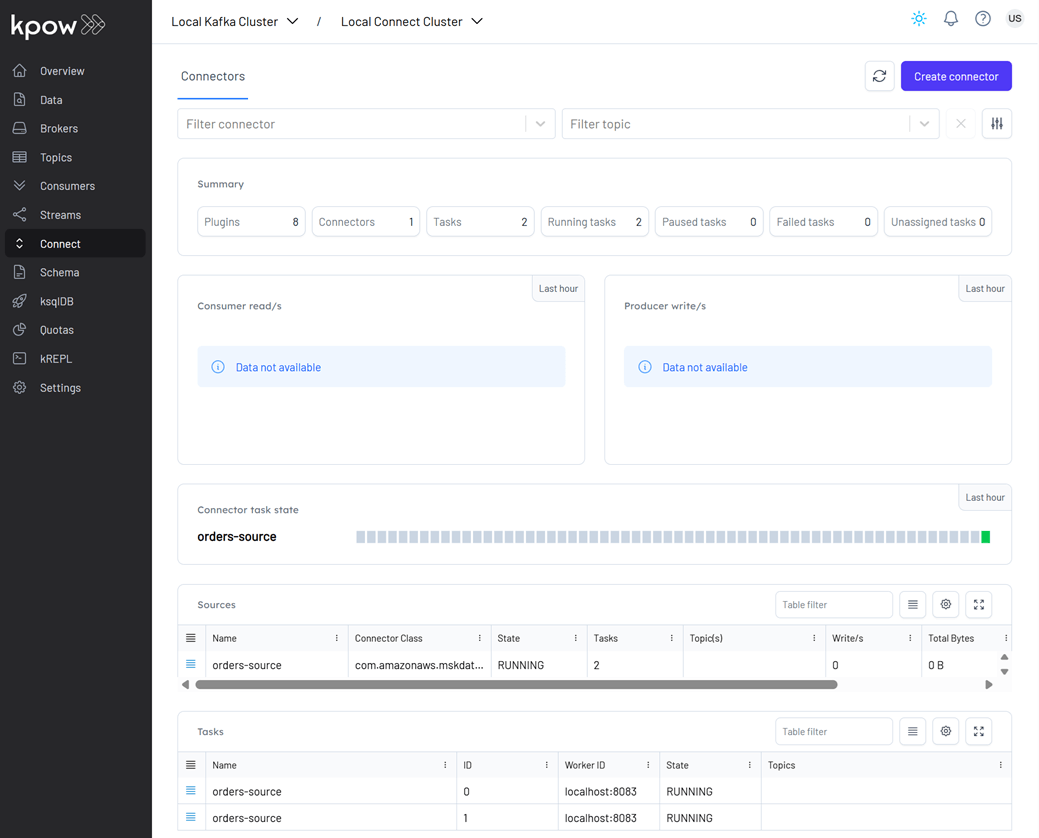
Running Kafka Streams application
To build and run the application locally, make sure your environment has JDK 17 installed.
We can launch the Kafka Streams application in two ways, catering to different stages of development and deployment:
- Using Gradle (Development Mode) Ideal for local development and testing, this approach allows for rapid iterations without packaging the application into a full JAR.
- Using the Shadow JAR (Deployment Mode) After building a "fat" JAR (also known as a shadow JAR) that bundles all dependencies, the application can be executed as a standalone binary. This method is typically used for staging or production deployments.
cd fh-local-labs/lab-03
👉 With Gradle (Dev Mode)
./gradlew run
👉 Build Shadow (Fat) JAR:
./gradlew shadowJar
# Resulting JAR:
# build/libs/fh-local-kafka-streams-stats-1.0.jar
👉 Run the Fat JAR:
java -jar build/libs/fh-local-kafka-streams-stats-1.0.jar
We demonstrate how to start the applications in development mode using Gradle. Once the application is running, it appears in the Streams menu.
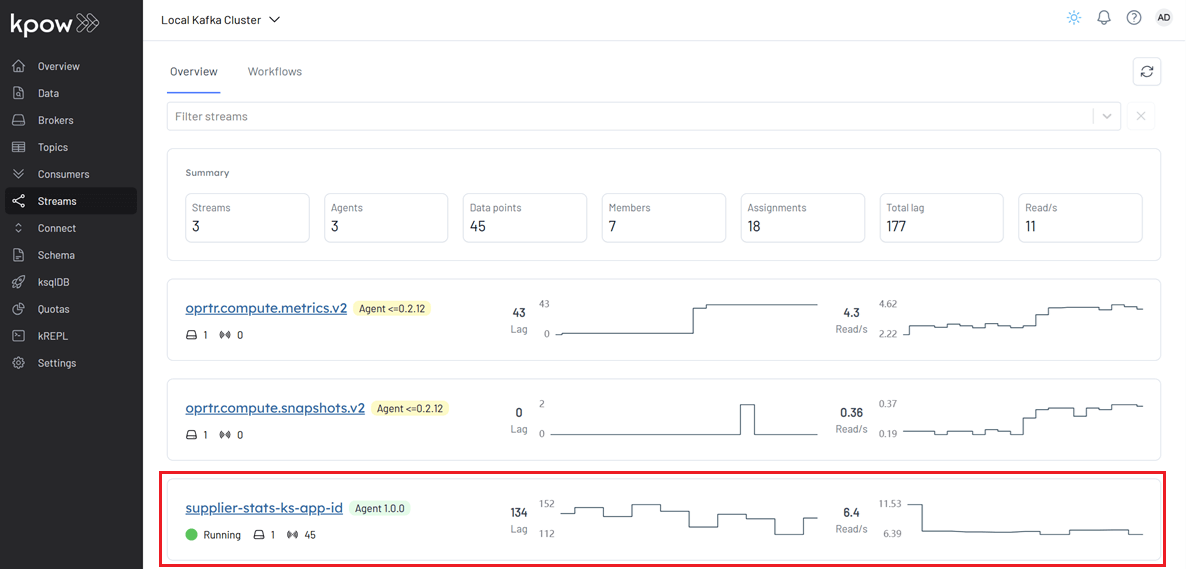
In the Workflows tab, both the Kafka Streams topology and the consumer topology are displayed.
A Kafka Streams topology is the logical plan that defines how a Kafka Streams application processes data. It represents the flow of data through various processing steps, including:
- Reading from input Kafka topics
- Transforming or enriching the data
- Grouping and aggregating records
- Branching or filtering
- Writing the results to output Kafka topics
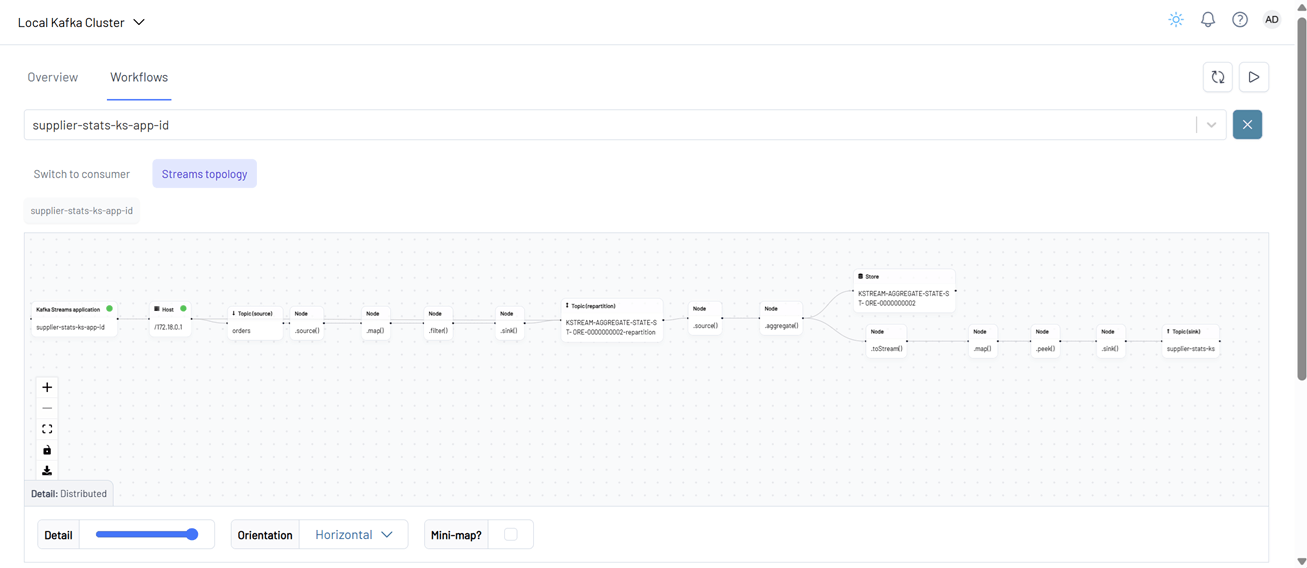
Clicking on a node or topic reveals detailed information about that entity in a side panel on the right.
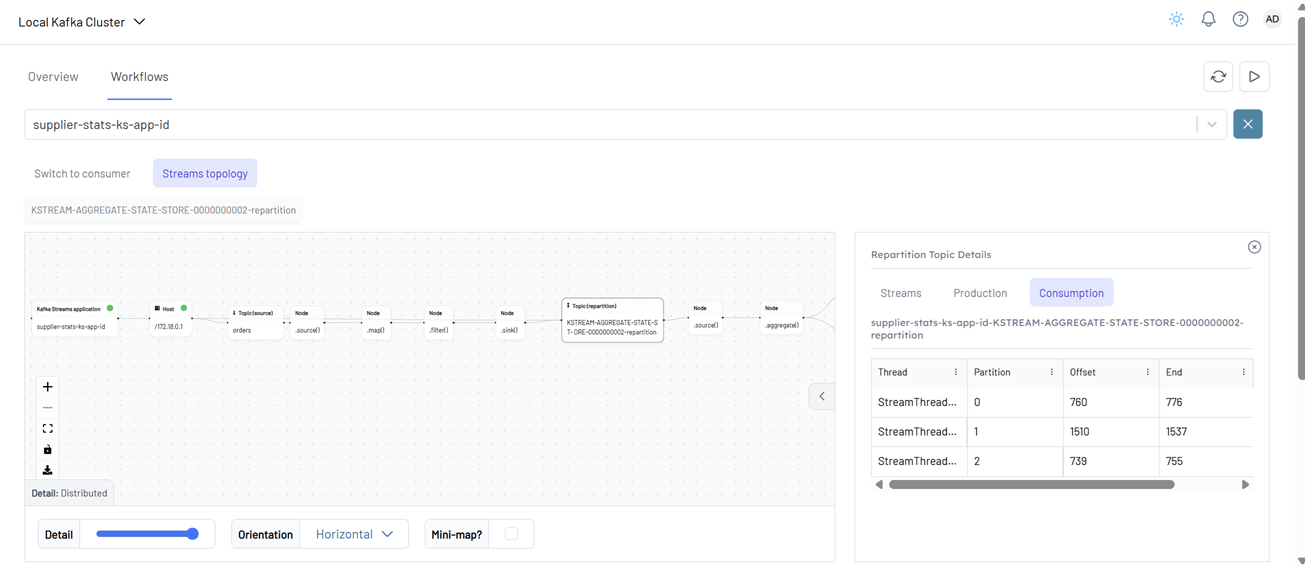
The consumer topology is also visualized. The edge labels in this view can show Lag, Read/s, or None, depending on the selected metric.
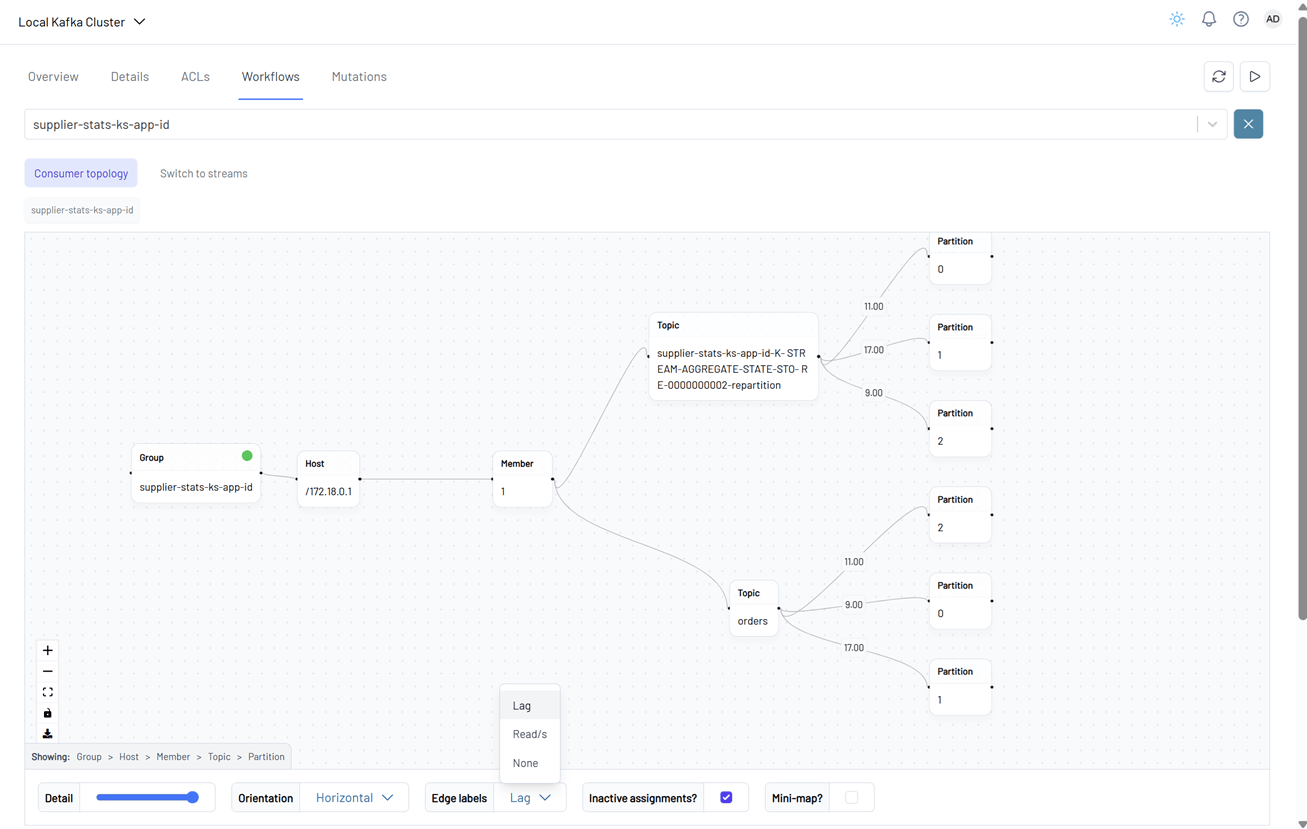
We can also verify that the sink connector registers the supplier-stats-ks-value schema in Kpow (localhost:3000).

Finally, we can inspect the messages in the supplier-stats-ks topic. For proper Avro decoding in Kpow, set the Key Deserializer to String, the Value Deserializer to AVRO, and select Local Schema Registry. Then, click the Search button to view the records.
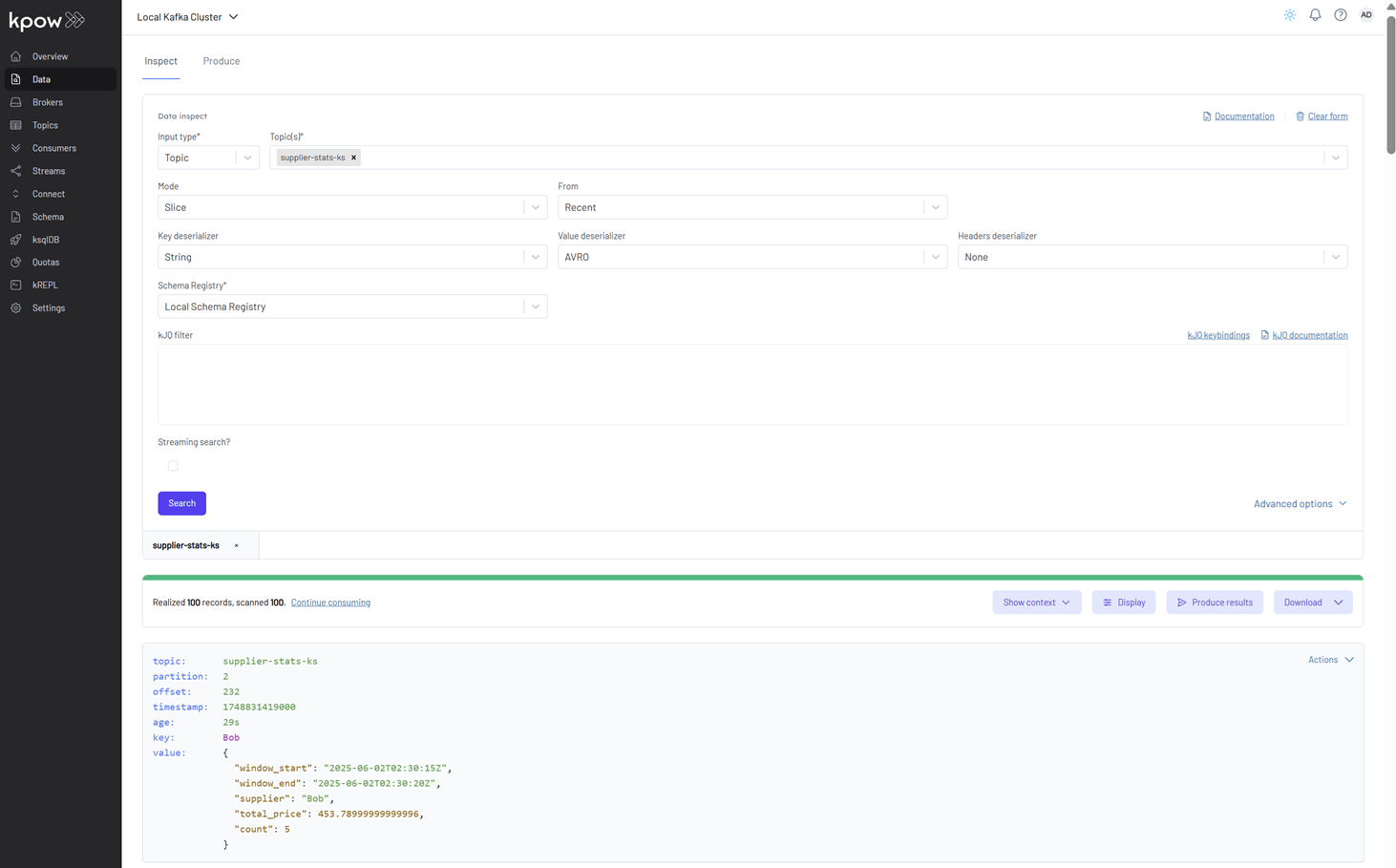
Shutdown environment
Stop and remove the Docker containers.
If you're not already in the project root directory, navigate there first. Then, stop and remove the Docker containers by running:
# Stops the containers and unsets environment variables
docker compose -p kpow -f ./factorhouse-local/compose-kpow.yml down
unset KPOW_SUFFIX KPOW_LICENSE